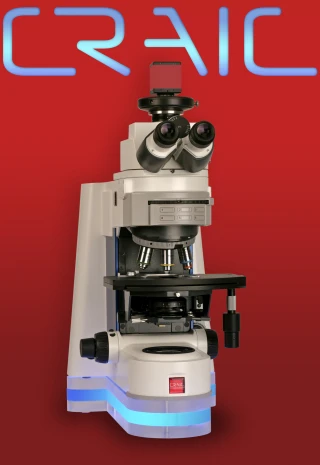Microscopes
Frequently Asked Questions
What is the difference between compound and stereo microscopes?
Compound microscopes use multiple lenses to magnify and view small objects or thin slices of objects. They are commonly used in biology and medical research. Stereo microscopes use two separate optical paths and provide a three-dimensional view of objects, making them useful in fields such as material science and engineering.
What is the difference between SEM and TEM microscopes?
SEM microscopes use a focused beam of electrons to produce high-resolution images of a sample's surface. TEM microscopes, on the other hand, use a focused beam of electrons to produce images of thin sections of a sample. They are useful for examining the structure of materials and biological samples.
What are some advanced features available in modern microscopes?
Modern microscopes can come with a range of advanced features, such as high-speed imaging, automated sample handling, and advanced image processing and analysis capabilities. Some microscopes may also offer specialized techniques, such as fluorescence microscopy, Raman spectroscopy, or X-ray microscopy, depending on the specific application.
What should I consider when selecting a microscope for my research or application?
When selecting a microscope, it's important to consider factors such as the magnification and resolution requirements, sample size and type, imaging mode (e.g. brightfield, darkfield, phase contrast, etc.), and any specialized techniques or features required for your specific application. Additionally, factors such as ease of use, maintenance requirements, and cost should also be taken into consideration.
What is the maximum resolution achievable with a microscope?
The maximum resolution achievable with a microscope is determined by the numerical aperture (NA) of the objective lens and the wavelength of light used to illuminate the sample. The theoretical maximum resolution is given by the Abbe diffraction limit, which is about 200 nm for visible light. However, techniques such as super-resolution microscopy can break this limit and achieve resolutions down to a few nanometers.
How does fluorescence microscopy work?
Fluorescence microscopy involves the use of fluorescent dyes or proteins that emit light of a different color when illuminated with a specific wavelength of light. The sample is illuminated with a specific wavelength of light, which excites the fluorescent molecules in the sample, causing them to emit light of a different color. This emitted light is then captured by the microscope and used to form an image. Fluorescence microscopy is commonly used to image biological samples, as it allows specific molecules or structures to be labeled with fluorescent tags and visualized in living cells and tissues.
What is the difference between confocal microscopy and traditional fluorescence microscopy?
Confocal microscopy is a type of fluorescence microscopy that uses a pinhole aperture to eliminate out-of-focus light from the sample, resulting in a higher resolution image with greater contrast. This allows for optical sectioning of the sample, where thin slices of the sample can be imaged at different depths to create a 3D reconstruction. Traditional fluorescence microscopy, on the other hand, captures all of the light emitted by the sample, resulting in a lower resolution image with less contrast. Confocal microscopy is commonly used in biological research, as it allows for the visualization of subcellular structures in 3D with high resolution.
Where can I find a wide selection of microscopes for non-contact inspection applications?
FindLight.net offers a wide selection of microscopes for non-contact inspection applications, enabling researchers and engineers to make informed choices based on their specific needs and requirements. With our user-friendly platform, users can easily find and compare different microscope models, filter by technical specifications and features, and request quotes or additional information from suppliers.
FindLight.net provides a comprehensive selection of microscopes for non-contact inspection applications in various industries, including electronics, materials science, and biotech. Our category of microscopes includes a variety of microscope types, such as stereo, confocal, and digital microscopes, that are equipped with advanced features for high-quality imaging and analysis. With our easy-to-use platform, you can quickly find the right microscope that meets your needs, budget, and application requirements. Browse our collection of microscopes for non-contact inspection today and reach out to top suppliers directly.



